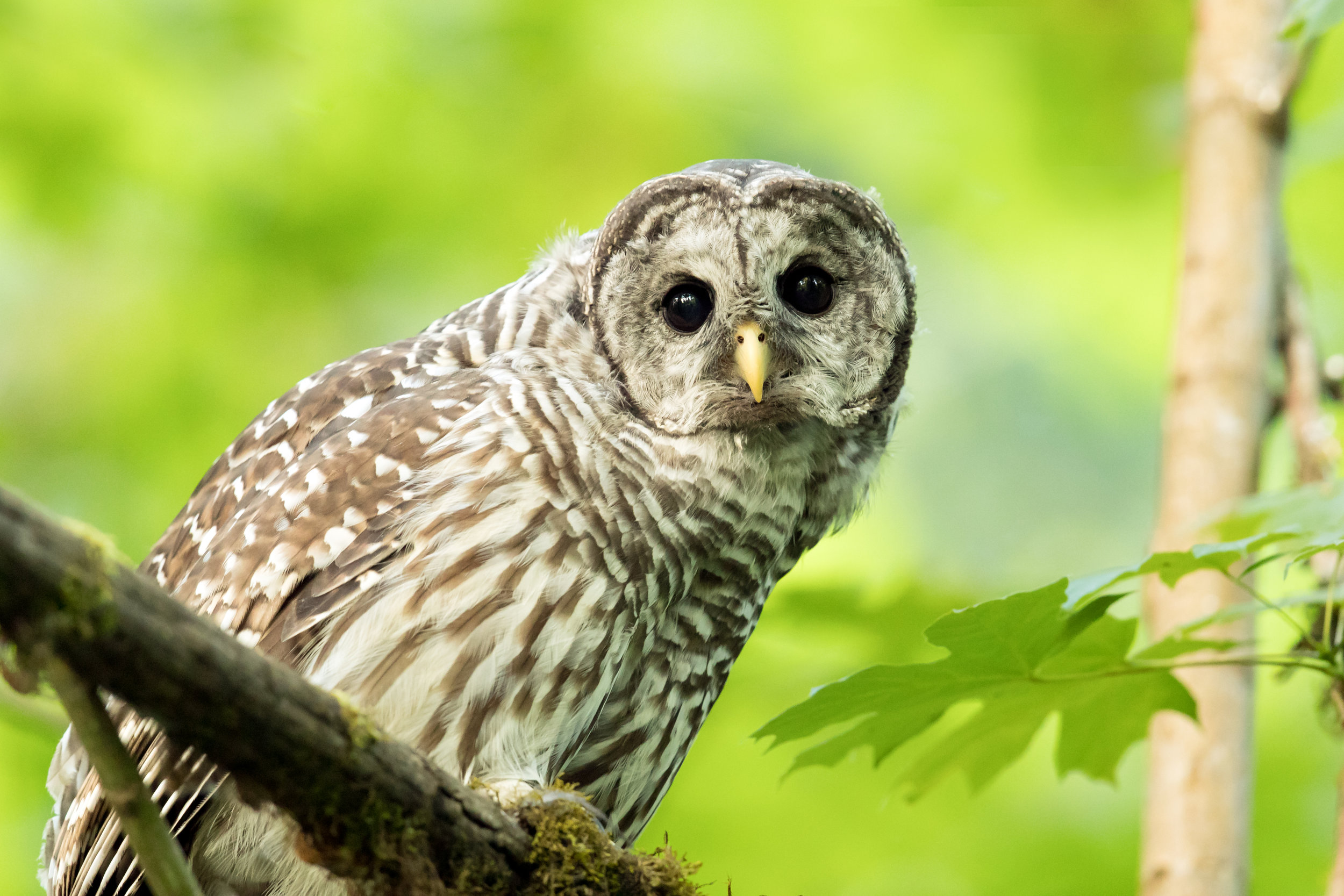Bird of the Month: Barred Owl
By Hugh Jennings
PC: Mick Thompson (Barred Owl)
Scientific Name: Strix varia
Length 21 in
Wingspan 42 in
Weight 1.6 lb (720 g)
AOU Band code BARR
The Barred Owl (BARR, due to conflict with Barn Owl being BAOW) is about 21” long with a wingspan of 42” and a weight of 1.6 lb. (720 g). This compares with 17.5”, 40” WS and 1.3 lb. for its cousin, the Spotted Owl. The genus name Strix (STRIKS) comes from the Greek, strizo, meaning to screech. The species name varia (VAY-rih-ah) is from Latin and means “variegated in plumage”.
The Barred Owl is stocky, round-headed, broad-winged and short-tailed. The Barred, Spotted and Barn Owls are our only owls with dark eyes. The Barred Owl has no ear tufts and has dark barring on the upper breast and dark streaking below.
It favors mostly dense and thick woods with only scattered clearings, especially in low-lying and swampy areas. It is common in deciduous and mixed woods in the southeast, but in the north and northwest may be found in coniferous trees. The Barred Owl is found throughout eastern U.S., across southern Canada and has recently expanded from British Columbia into Washington, Oregon and northern California. It first was noted in Pend Oreille County in 1965 and has since spread throughout the state. Its range expansion threatens the Spotted Owl with which it sometimes hybridizes. Its distinctive call is a rhythmic series of loud hoots: who-cooks-for-you, who-cooks-for-you-all. The call is sometimes preceded by a ascending agitated barking.
The owl eats mice, rabbits, reptiles, insects and amphibians. It hunts most at dawn or dusk and seeks prey by watching from a perch or flying through the forest.
Courtship includes both male and female bobbing and bowing heads, raising wings and calling while perched together. The male and female often call in duet.
Their nest is in a large natural hollow in a tree, broken-off snag, or on an old nest of a hawk, crow or squirrel. Two to three white eggs, rarely 4, are laid. Incubation is mostly by the female and lasts 28-33 days. The male brings food to the incubating female. The female may stay with the young much of the time at first, while the male hunts and brings food back for her and the young. First flight is in about six weeks.
Barred Owls are permanent residents throughout its range. However, individuals may wander away from nesting habitat in the winter.


